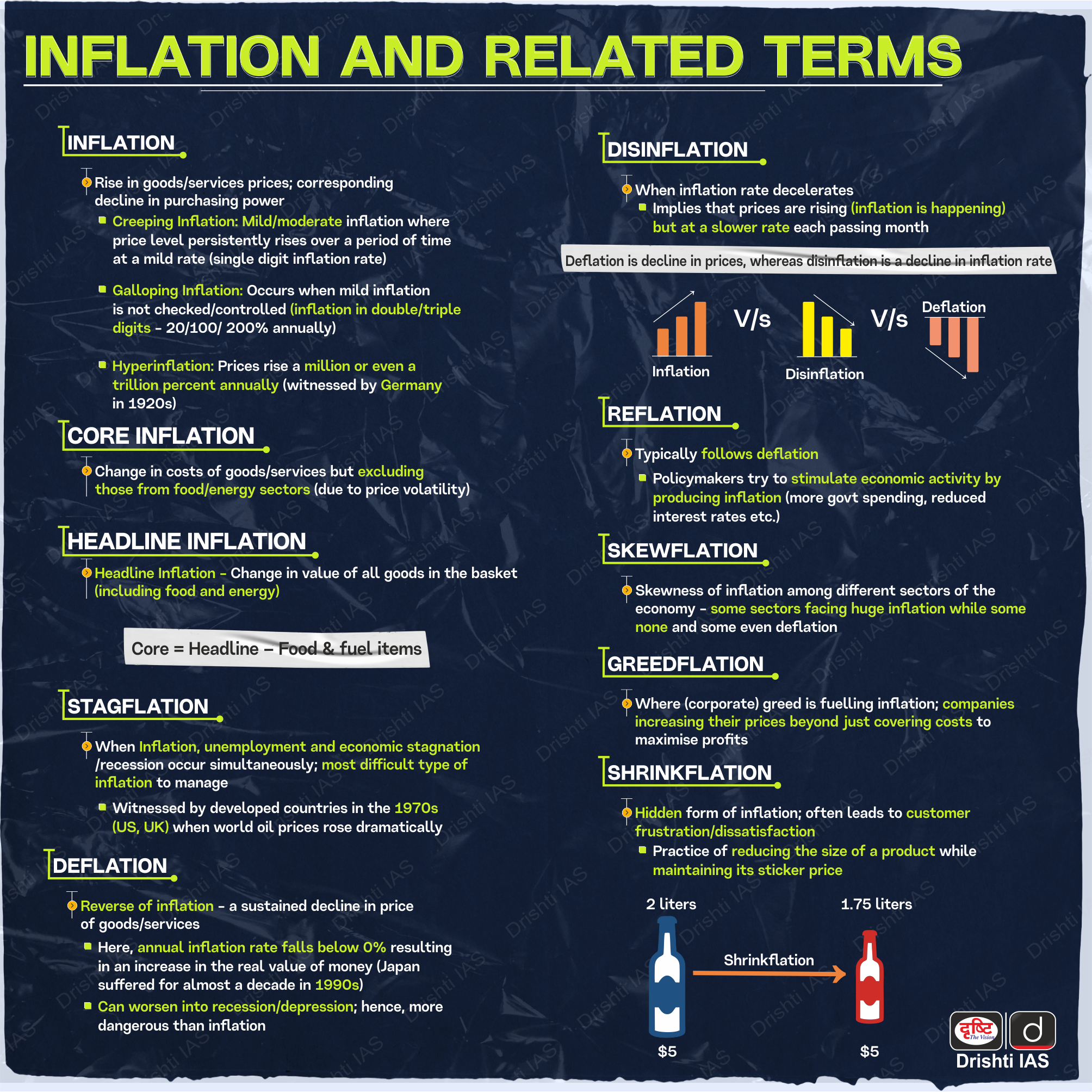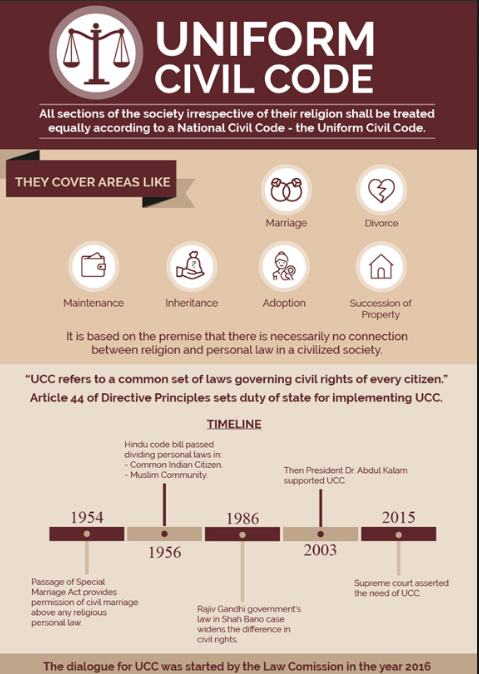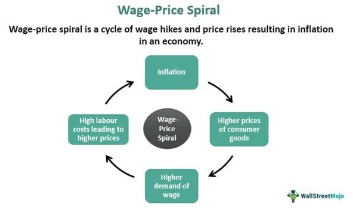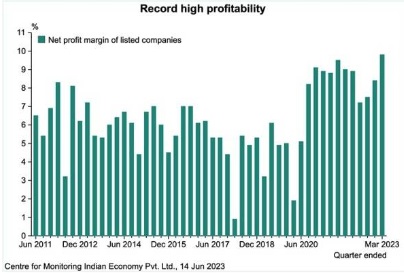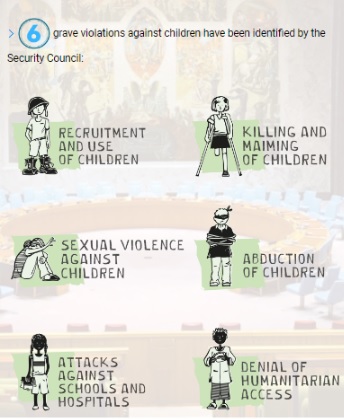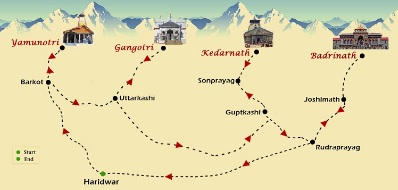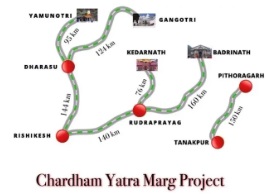Infographics
Indian Polity
Need for UCC in India
For Prelims: Uniform Civil Code, Article 44 of the Constitution, Seventh Schedule, Special Marriage Act of 1954, 22nd Law Commission of India.
For Mains: Arguments in Favour and Against UCC, Efforts Towards UCC in India, Challenges in Implementing UCC.
Why in News?
Indian Prime Minister in his recent address expressed his support for the implementation of a Uniform Civil Code (UCC) in India, stating that India cannot function efficiently with a system of “separate laws for separate communities”.
What is a Uniform Civil Code?
- Origin and History:
- The British government's 1835 report in colonial India called for uniform codification of Indian law, including crimes, evidence, and contracts.
- However, the Lex Loci Report of October 1840 suggested that personal laws of Hindus and Muslims should be excluded from this codification.
- As British rule progressed, the B N Rau Committee was formed in 1941 to codify Hindu law, leading to the enactment of the Hindu Succession Act in 1956.
- The British government's 1835 report in colonial India called for uniform codification of Indian law, including crimes, evidence, and contracts.
- Constituent Assembly’s Views on UCC:
- During the debates in the Constituent Assembly, the inclusion of the UCC sparked significant discussion.
- There was a vote, resulting in a 5:4 majority, where it was decided by the sub-committee on fundamental rights, led by Sardar Vallabhbhai Patel, that the UCC would not be included as a fundamental right.
- Dr. B R Ambedkar, while drafting the Constitution, stated that a UCC was desirable but should remain voluntary until the nation was socially prepared to accept it.
- As a result, the UCC was placed in the Directive Principles of State Policy (DPSP) (Article 44).
- During the debates in the Constituent Assembly, the inclusion of the UCC sparked significant discussion.
Note: In India, personal law subjects like marriage, divorce, inheritance come under Concurrent list (7th Schedule).
What are the Arguments in Favour of UCC?
- Celebrating Diversity, Strengthening Unity: It will promote national integration and secularism by removing the distinctions and contradictions based on religious personal laws and creating a common identity for all citizens.
- It would also foster a sense of unity and harmony among diverse communities.
- For example, UCC would enable inter-faith marriages and relationships without any legal hurdles or social stigma.
- Empowering Women through Uniformity: It would ensure gender justice and equality by abolishing the discriminatory and oppressive practices against women in various personal laws, such as polygamy, unequal inheritance, etc.
- Streamlining Laws for Legal Efficiency: India's current legal system is burdened with complex and overlapping personal laws, leading to confusion and legal disputes.
- A UCC would simplify the legal framework by consolidating and harmonising various laws into a single code.
- This would enhance clarity, ease of implementation, and reduce the burden on the judiciary, ensuring a more efficient legal system.
- Drawing Inspiration from Global Success Stories: Many countries across the world like France, have implemented a uniform civil code.
- A UCC is the sign of a modern progressive nation implying that it has moved away from caste and religious politics.
What are the Arguments Against the UCC?
- Threat to Minority Rights: India's strength lies in its diverse society, and personal laws have been developed to accommodate these diversities.
- Critics argue that imposing a single code might undermine the cultural and religious autonomy of minority communities, leading to feelings of alienation and marginalisation.
- Judicial Backlog: India already faces a significant backlog of cases, and implementing a UCC could exacerbate the situation.
- The extensive legal reforms necessary to harmonize personal laws into a single code would demand significant time and effort.
- Consequently, during this transitional period, the legal system may experience an increased burden due to the emergence of new cases challenging the constitutionality of the UCC.
- Complexities within UCC in Goa: Goa's implementation of a UCC has been praised by the Supreme Court in 2019. However, the ground reality reveals complexities and legal pluralities within the state's UCC.
- The UCC in Goa permits a specific form of polygamy for Hindus and does not extend the Shariat Act to Muslims (they are governed by Portuguese and Shastric Hindu laws).
- Additionally, catholics enjoy certain privileges, such as exemption from marriage registration and the ability of Catholic priests to dissolve marriages.
- This highlights the complexity of personal laws in India, even within a state known for implementing a UCC.
What are the Efforts Towards UCC in India?
- Statutory Provision:
- Special Marriage Act, 1954: Under the act, civil marriage is permitted for any citizen, regardless of religion, allowing any Indian to get married outside of religious custom.
- SC Judgements Recommending the Need for UCC:
- Shah Bano Case 1985
- Sarla Mudgal Case 1995
- Paulo Coutinho vs Maria Luiza Valentina Pereira (2019)
What is the Stance of Law Commission Related to UCC?
- Law Commission of India (2018): It stated that UCC is neither necessary nor desirable at this stage, as it would be counter-productive for the harmony of the nation.
- It also suggested that reforms in personal laws should be done by amendments and not by replacement.
- Recently, 22nd Law Commission of India has chosen to seek the opinions and suggestions of the general public as well as recognised religious organizations regarding the UCC.
What are the Challenges in Implementing UCC?
- Political Inertia: No political party has shown a sincere and consistent commitment to enact UCC, as it is seen as a sensitive and divisive issue that may alienate their vote banks.
- Moreover, there is no consensus among various parties and stakeholders on the scope, content and form of UCC, as different groups have different views and interests on personal matters.
- Lack of Awareness and Education: Many people in India are not even aware of their legal rights and obligations under their personal laws or under the common laws.
- They are also not educated about the benefits and drawbacks of UCC or about the experiences of other countries that have adopted or rejected UCC.
- They are often influenced by misinformation or propaganda spread by vested interests or communal forces.
Way Forward
- Comparative Analysis: There is a need to conduct a comprehensive comparison analysis of the various personal laws in India. This will help in understanding the commonalities and areas of contention.
- Enactment of Common Principles: Based on the comparative analysis, we can enact a law of personal status that incorporates principles shared by the different personal laws.
- These common principles, which align closely across various personal laws, can be immediately enforced to establish a uniform legal framework.
- Family Law Board: There is a need to establish a Family Law Board within the Union Law Ministry which would be responsible for studying and recommending changes to personal laws related to family matters.
- Brick by Brick Approach: A just code is far more important than a uniform code; Pilot projects can be initiated in select regions or communities which would demonstrate the viability, acceptance and practicality of a UCC.
UPSC Civil Services Examination, Previous Year Question (PYQ)
PrelimsQ1. Consider the following provisions under the Directive Principles of State Policy as enshrined in the Constitution of India: (2012)
- Securing for citizens of India a uniform civil code
- Organising village Panchayats
- Promoting cottage industries in rural areas
- Securing for all the workers reasonable leisure and cultural opportunities
Which of the above are the Gandhian Principles that are reflected in the Directive Principles of State Policy?
(a) 1, 2 and 4 only
(b) 2 and 3 only
(c) 1, 3 and 4 only
(d) 1, 2, 3 and 4
Ans: (b)
Mains
Q. Discuss the possible factors that inhibit India from enacting for its citizens a uniform civil code as provided for in the Directive Principles of State Policy. (2015)


Indian Economy
Greedflation
For Prelims: Greedflation, Inflation, Disinflation, Disinflation, Deflation, Reflation, Wage-Price Spiral, RBI.
For Mains: Greedflation and its impact on the economy.
Why in News?
Recently, there has been an increasing consensus in Europe and US that Greedflation is driving the rising cost of living rather than just Inflation.
- To understand greedflation it is important to know how inflation works.
What are the Key Terms Related to Inflation?
- Inflation:
- Inflation is the rate at which the general price level rises.
- If it is reported that the inflation rate was 5% in June 2023 it implies that the general price level of the economy was 5% more than what it was in June 2022.
- Disinflation:
- Disinflation refers to the trend when the inflation rate decelerates.
- It refers to a period when even though prices are rising, it is happening at a slower rate each passing month.
- For example, it was 10% in April, 7% in May and 5% in June.
- Deflation:
- Deflation is the exact opposite of inflation. Imagine if the general prices level in June 2023 was 5% lower than what it was in June 2022. That’s deflation.
- It is a general decline in prices for goods and services, typically associated with a contraction in the supply of money and credit in the economy.
- Reflation:
- Reflation typically follows deflation as policymakers try to pump up economic activity either by government spending more and/or interest rates being reduced.
What Causes Inflation?
- Causes:
- Cost Push Inflation: Prices get pushed up because input costs have risen.
- For Example: If crude oil prices went up by 10% overnight because of a supply disruption, then the general price level will be pushed up because energy costs have gone up.
- Demand Pull Inflation: Prices are pulled up because there is excess demand.
- For Example: If RBI (Reserve Bank of India) cuts interest rates sharply, making people buy a house quite affordable since the interest rate has fallen, then the sudden surge in demand for new houses will pull up home prices.
- Cost Push Inflation: Prices get pushed up because input costs have risen.
- Measures to Curb Inflation:
- Monetary Policy: When there is too much demand in the economy, central banks increase interest rates as their Monetary Policy measure (contractionary monetary policy) to align demand with supply. Similarly, if inflation arises from cost pressures, central banks still raise interest rates.
- The primary objective is to contain demand because central banks have limited tools to directly boost supply.
- They aim to prevent the Wage-Price Spiral, where rising prices lead to higher wages, increasing production costs and further price increases.
- Fiscal Policy: If there is inflationary pressure, the government can reduce spending or increase taxes to decrease aggregate demand and dampen price pressures in the economy.
- Fiscal policy is the use of government revenue collection (mainly taxes but also non-tax revenues such as divestment, loans) and expenditure to influence the economy.
- Monetary Policy: When there is too much demand in the economy, central banks increase interest rates as their Monetary Policy measure (contractionary monetary policy) to align demand with supply. Similarly, if inflation arises from cost pressures, central banks still raise interest rates.
What is the Wage-Price Spiral?
- When prices rise, workers demand higher wages, but this only increases overall demand without improving supply.
- As a result, inflation worsens because higher wages lead to increased purchasing power, which drives up prices.
- Central banks raise interest rates to reduce economic activity and demand, which can result in job losses. Despite its drawbacks, this approach is used by central banks to prevent a cycle of rising wages and prices, known as a wage-price spiral, and to curb inflation.
What is Greedflation?
- About:
- Greedflation refers to the situation where corporate greed drives inflation. Rather than a wage-price spiral, it is a Profit-Price Spiral where companies exploit inflation by raising prices excessively, going beyond covering their increased costs, and aiming to maximize their profit margins. These further fuels inflation.
- There is a growing consensus in developed countries, like Europe and the US, that greedflation is the true culprit.
- Greedflation refers to the situation where corporate greed drives inflation. Rather than a wage-price spiral, it is a Profit-Price Spiral where companies exploit inflation by raising prices excessively, going beyond covering their increased costs, and aiming to maximize their profit margins. These further fuels inflation.
- Scenario:
- During crises like natural disasters or pandemics, prices often surge as businesses raise them due to increased input costs.
- However, in some cases, businesses exploit the situation by making excessive profits through significantly higher price mark-ups.
- Impact:
- Greedflation disproportionately impacts low-income and middle-class individuals, reducing their consumption and lowering their standards of living.
- While it benefits the wealthy by increasing the value of their assets, widening the wealth gap and exacerbating income inequality.
- Sharp price increases and speculation driven by greed can create bubbles and unsustainable market conditions. This makes financial markets more susceptible to crashes and crises, posing risks to overall economic stability.
- Inflationary pressures caused by greedflation can result in divergent policies among countries. Each nation may adopt different strategies to combat inflation, leading to conflicting approaches.
- This can exacerbate global imbalances, trade tensions, and geopolitical conflicts as countries seek to protect their own interests and competitiveness.
- Greedflation disproportionately impacts low-income and middle-class individuals, reducing their consumption and lowering their standards of living.
Is Greedflation Happening in India?
- Trend:
- The net profits of listed companies can be seen at a record high.
- Indian listed companies'(4,293) net profits surged to Rs.2.9 trillion in March 2023, over 3.5 times the pre-pandemic average of Rs.0.83 trillion from December 2017 to Dec 2019, indicating exceptional post-pandemic profit generation.
- Existence of Greedflation:
- In India, 60% of the growth in net profit can be attributed entirely to the increase in profit margin. The increase in sales contributed an additional 36% and the rest was a bonus from a combination of the two, which suggests the presence of greedflation.
UPSC Civil Services Examination, Previous Year Question (PYQ)
Q.1 With reference to Indian economy, demand-pull inflation can be caused/increased by which of the following?
- Expansionary policies
- Fiscal stimulus
- Inflation-indexing of wages
- Higher purchasing power
- Rising interest rates
Select the correct answer using the code given below:
(a) 1, 2 and 4 only
(b) 3, 4 and 5 only
(c) 1, 2, 3 and 5 only
(d) 1, 2, 3, 4 and 5
Ans: (a)
Q.2 Consider the following statements: (2020)
- The weightage of food in Consumer Price Index (CPI) is higher than that in Wholesale Price Index (WPI).
- The WPI does not capture changes in the prices of services, which CPI does.
- Reserve Bank of India has now adopted WPI as its key measure of inflation and to decide on changing the key policy rates.
Which of the statements given above is/are correct?
(a) 1 and 2 only
(b) 2 only
(c) 3 only
(d) 1, 2 and 3
Ans: (a)


Indian Economy
Udyami Bharat-MSME Day 2023
For Prelims: Micro, Small, and Medium Enterprises, International MSME Day, 'CHAMPIONS 2.0 Portal, Udyam Portal
For Mains: Significance of the MSME sector for India's economic growth, Role of digitalization and technology adoption in MSMEs, Role of MSMEs in rural development
Why in News?
On the occasion of International MSME Day,2023, the Ministry of Micro, Small & Medium Enterprises (MSME) organized the 'Udyami Bharat-MSME Day' event, aimed at celebrating and promoting the growth and development of MSMEs.
- The event witnessed the launch of several initiatives by, the Union Minister for MSME, including the 'CHAMPIONS 2.0 Portal,' 'Mobile App for Geo-tagging of Cluster Projects and Technology Centers,' and the announcement of 'MSME Idea Hackathon 3.0' for women entrepreneurs.
What is International MSME Day?
- About:
- International MSME Day is observed on 27th June annually to recognize the significance of MSMEs and their contribution to the economy.
- MSMEs are recognized as the backbone of the country's economy.
- Theme of MSME Day 2023:
- In India, the theme for MSME Day 2023 is "Future-ready MSMEs for India@100."
- The Global Council for the Promotion of International Trade celebrates with the theme "Building a Stronger Future Together" and launches the #Brand10000MSMEs Network.
- Global Council for the Promotion of International Trade is an organisation based out of India, South Africa, USA, UAE, EU and the United Kingdom with board & council member representation across the world.
- History and Significance:
- In April 2017, the United Nations designated 27th June as Micro, Small, and Medium-sized Enterprises Day.
- The day aims to enhance national capacities for unleashing the full potential of MSMEs in achieving Sustainable Development Goals.
What are the Key Highlights of the Event?
- Initiatives Launched:
- CHAMPIONS 2.0 Portal:
- The Ministry introduced the 'CHAMPIONS 2.0 Portal' aimed at supporting and promoting MSMEs.
- This platform will provide various services such as mentoring, capacity building, access to markets, and grievance redressal to MSMEs.
- Mobile App for Geo-tagging of Cluster Projects and Technology Centers:
- To enhance efficiency and track the progress of cluster projects and technology centers, the Ministry launched a mobile app for geo-tagging.
- This app will facilitate effective monitoring, evaluation, and reporting of ongoing projects.
- MSME Idea Hackathon 3.0 for Women Entrepreneurs:
- Building on the success of the previous idea hackathon, the Ministry launched the 'MSME Idea Hackathon 3.0' specifically focused on women entrepreneurs.
- This initiative aims to foster innovation, encourage entrepreneurial ideas, and provide a platform for women to showcase their talent and contribute to the MSME sector.
- CHAMPIONS 2.0 Portal:
- Memorandums of Understanding (MoUs) Signed:
- Ministry of MSME and Small Industries Development Bank of India(SIDBI):
- To create a portal for 'PM Vishwakarma KAushal Samman' (PMVIKAS) by SIDBI.
- To identify the local traditional artisans and craftsmen who were not a part of any targeted interventions so far.
- Ministry of MSME and GeM:
- To share Udyam Registration data with Government e-Marketplace(GeM) for last mile registration of MSMEs in the Public Procurement eco-system.
- Ministry of MSME and the Industry Department, Government of Tripura:
- To share Udyam Registration data through API, easing policy making and targeted distribution of scheme benefits.
- Ministry of MSME and Credit Guarantee Fund Trust for Micro and Small Enterprises (CGTMSE):
- To provide guarantee coverage to the beneficiaries of the MSME sector.
- National Small Industries Corporation (NSIC) and National Scheduled Castes Finance and Development Corporation (NSFDC) & National Scheduled Tribes Finance and Development Corporation (NSTFDC):
- To promote mutual collaboration for supporting SC/ ST entrepreneurs under National SC-ST Hub and various schemes.
- Ministry of MSME and Small Industries Development Bank of India(SIDBI):
What is MSME?
- About:
- MSMEs form the backbone of the Indian economy, contributing significantly to employment generation, industrial production, and overall economic growth. These enterprises are engaged in the production, manufacturing, processing, or preservation of goods and commodities.
- Classification of MSMEs:
- MSMEs in India are classified based on their investment in plant and machinery or equipment, along with their annual turnover. The current classification is as follows:
- Micro Enterprises: Investment up to Rs. 1 crore and turnover up to Rs. 5 crores.
- Small Enterprises: Investment between Rs. 1 crore and Rs. 10 crores, and turnover between Rs. 5 crore and Rs. 50 crores.
- Medium Enterprises: Investment between Rs. 10 crores and Rs. 50 crores, and turnover between Rs. 50 crore and Rs. 250 crores.
- MSMEs in India are classified based on their investment in plant and machinery or equipment, along with their annual turnover. The current classification is as follows:
What is the Significance of MSME Sector?
- Global:
- According to the United Nations data, MSMEs account for up to 90% of businesses, over 60% to 70% of jobs worldwide, and half of global GDP.
- India:
- Boon for Rural Development: Compared with large-scale companies, MSMEs aided in the industrialisation of rural areas at minimal capital cost. The sector has made significant contributions to the country's rural socio-economic growth and complemented major industries as well.
- Employment: MSMEs employ over 110 million people across approximately 63 million enterprises.
- Front Runner in Make in India Mission: India aims that the products that are 'Make in India' also ‘Made for the World,’ adhering to global standards of quality. MSME is acquiring the center stage in the mission. It is taken as a backbone in making this dream a possibility.
- They produce 45% of India’s manufactured goods, and also contribute to over 50% of total exports, and manufacture over 8,000 products with added value, spanning from traditional to advanced tech items.
- Simple Management Structure for Enterprises: Considering India’s middle-class economy, MSME offers a flexibility that it can start with limited resources within the control of the owner. From this decision making gets easy and efficient.
- On the contrary, a large corporation requires a specialist for every departmental functioning as it has a complex organizational structure.
- Economic Growth and Leverage Exports: It is the most significant driver in India contributing approximately 30% to Gross Domestic Product (GDP).
What are the Recent Government Initiatives Related to MSMEs?
- Raising and Accelerating MSME Performance (RAMP) Scheme
- Credit Guarantee Trust Fund for Micro & Small Enterprises (CGTMSE)
- Interest Subsidy Eligibility Certificate (ISEC)
- A Scheme for Promoting Innovation, Rural Industry & Entrepreneurship (ASPIRE)
- Credit Linked Capital Subsidy for Technology Upgradation (CLCSS)
- Zero Defect & Zero Effect (ZED)
What are the Challenges Faced by MSMEs?
- Limited access to formal finance and credit facilities.
- Lack of technological advancements and limited digital infrastructure.
- Difficulty in complying with complex regulatory and bureaucratic processes.
- Limited market access and competition from large-scale enterprises.
- Skilled labor shortage and challenges in talent acquisition.
- Vulnerability to economic downturns and market fluctuations.
- Lack of awareness about government schemes and support programs.
Way Forward
- Strengthening financial inclusion and improving access to formal credit for MSMEs.
- Promoting digitalization and providing technical support for technology adoption.
- Simplifying regulatory processes and reducing bureaucratic hurdles.
- Facilitating market linkages and promoting e-commerce platforms.
- Enhancing skill development initiatives and promoting entrepreneurship education.
- Investing in infrastructure development and improving connectivity.
- Developing risk mitigation strategies and promoting diversification of products and markets.
- Conducting awareness campaigns and providing guidance about government schemes and support programs.
UPSC Civil Services Examination, Previous Year Question:(PYQ)
Prelims:
Q.1 What is/are the recent policy initiative(s)of Government of India to promote the growth of the manufacturing sector? (2012)
- Setting up of National Investment and Manufacturing Zones
- Providing the benefit of ‘single window clearance’
- Establishing the Technology Acquisition and Development Fund
Select the correct answer using the codes given below:
(a) 1 only
(b) 2 and 3 only
(c) 1 and 3 only
(d) 1, 2 and 3
Ans: (d)
Q.2. Which of the following can aid in furthering the Government’s objective of inclusive growth? (2011)
- Promoting Self-Help Groups
- Promoting Micro, Small and Medium Enterprises
- Implementing the Right to Education Act
Select the correct answer using the codes given below:
(a) 1 only
(b) 1 and 2 only
(c) 2 and 3 only
(d) 1, 2 and 3
Ans: (d)
Q3. Consider the following statements with reference to India : (2023)
- According to the ‘Micro, Small and Medium Enterprises Development (MSMED) Act, 2006, the ‘medium enterprises’ are those with investments in plant and machinery between `15 crore and `25 crore.
- All bank loans to the Micro, Small and Medium Enterprises qualify under the priority sector.
Which of the statements given above is/are correct?
(a) 1 only
(b) 2 only
(c) Both 1 and 2
(d) Neither 1 nor 2
Ans: (b)


Social Justice
India Removed from the Report on Children and Armed Conflict
Why in News?
For Prelims: Report on Children and Armed Conflict, UN General Assembly (UNGA), Juvenile Justice Act, 2015, Protection of Children from Sexual Offenses (POCSO) Act
For Mains: Steps Taken by the Indian Government to Protect Children, Global Conventions Related to Children and Armed Conflict, Impact of Armed Conflict on Children
First time since 2010, the United Nations Secretary-General has removed India from the 2023 report on Children and Armed Conflict in view of measures taken by the Indian government to protect children.
- India was previously accused of recruiting and using boys in armed groups in Jammu and Kashmir (J&K). In 2022, a higher number of violations against children were confirmed in J&K.
What is a Report on Children and Armed Conflict (CAAC)?
- Background:
- 25 years ago, in December 1996, the UN General Assembly (UNGA) took the unprecedented decision to create a mandate to protect children from hostilities and adopted resolution 51/77 which created the CAAC mandate.
- 51/77 resolution recommended that the Secretary-General appoint for a period of three years, a Special Representative on the impact of armed conflict on children.
- 25 years ago, in December 1996, the UN General Assembly (UNGA) took the unprecedented decision to create a mandate to protect children from hostilities and adopted resolution 51/77 which created the CAAC mandate.
- Objective:
- Strengthen the protection of children affected by armed conflict, raised awareness, promote the collection of information about the plight of children affected by war and foster international cooperation to improve their protection.
- The report also mentioned the detention, killing, and injuring of children by security forces.
- Recent Observation:
- Among the various types of violations, the highest numbers were reported for the killing of 2,985 children and the maiming (wound or injured) of 5,655 children, totaling 8,631 affected children.
- This was followed by the recruitment and use of 7,622 children and the abduction of 3,985 children. Additionally, children were detained either for their actual or alleged association with armed groups (2,496), including those recognised as terrorist groups by the UN or for reasons related to national security.
- Countries recording the highest number of violations were the Democratic Republic of the Congo (DRC), Israel, the State of Palestine, Somalia, Syria, Ukraine, Afghanistan, and Yemen.
- Among the various types of violations, the highest numbers were reported for the killing of 2,985 children and the maiming (wound or injured) of 5,655 children, totaling 8,631 affected children.
What are the Steps Taken by the Indian Government to Protect Children?
- In J&K, many systems were lacking or ineffective in the past including the Juvenile Justice Act, 2015 was not enforced, and the juvenile homes in India were not operating effectively.
- However, measures have been taken to address these issues, including the establishment of infrastructure such as Child Welfare Committees, Juvenile Justice Boards, and Child Care Homes under the JJ Act, 2015.
- Several measures recommended by the UN have already been implemented or are currently underway in India. Training programs for security forces on protecting children have been conducted, and the use of pellet guns has been suspended.
- Additionally, the Juvenile Justice Act and the Protection of Children from Sexual Offenses (POCSO) Act, 2012 are being actively enforced.
- The implementation of legal and administrative frameworks for safeguarding children and the improved accessibility to child protection services in Chhattisgarh, Assam, Jharkhand, Odisha, and J&K were also appreciated by the UNGA.
- Furthermore, progress was acknowledged in establishing a J&K Commission for the Protection of Child Rights.
What are the Related Global Conventions?
- The recruitment or use of children below the age of 15 as soldiers is prohibited by both the UN Convention on the Rights of the Child (CRC) and the additional protocols to the Geneva Conventions.
- The CRC says childhood is separate from adulthood, and lasts until 18; it is a special, protected time, in which children must be allowed to grow, learn, play, develop and flourish with dignity.
- The Geneva Conventions and their Additional Protocols form the core of international humanitarian law, which regulates the conduct of armed conflict and seeks to limit its effects. They protect people not taking part in hostilities and those who are no longer doing so.
- The Optional Protocol to the CRC on the involvement of children in armed conflict further prohibits kids under the age 18 from being compulsorily recruited into state or non-state armed forces or directly engaging in hostilities.
- Optional Protocols to human rights treaties are treaties in their own right, and are open to signature, accession or ratification by countries who are party to the main treaty.
- Recruiting Child Soldiers is also considered a war crime under the Rome Statute of the International Criminal Court (ICC).
- Also, the UN has identified the recruitment and use of child soldiers as among six “grave violations”. Other Five violations are:
Note:
- India is a party to the CRC and acceded to Optional Protocol in November 2005. The Constitution encompasses most rights included in the CRC as Fundamental Rights and Directive Principles of State Policy (DPSP).
- Article 39 (f) states that children are given opportunities and facilities to develop in a healthy manner and in conditions of freedom and dignity and that childhood and youth are protected against exploitation and against moral and material abandonment.
- The Indian Penal Code (IPC) criminalises the recruitment or use in hostilities of persons under-18 years by state armed forces or non-state armed groups.
- Adults of age over 18 years are recruited in the Central Armed Police Forces (CAPF).
What is the Impact of Armed Conflict on Children?
- Killing and Maiming: Children are often directly targeted in conflicts, resulting in the loss of life and severe injuries. This includes incidents of intentional killing and acts of violence that cause physical harm or disabilities.
- Recruitment and Use: Armed groups exploit children by forcibly recruiting or coercing them into participating in hostilities. Children may be used as combatants, messengers, spies, or for other support roles.
- Abduction and Forced Displacement: Children are frequently subjected to abduction, where they are forcefully taken away from their families. Armed conflicts also lead to mass displacement, forcing children to flee their homes, schools, and communities, often experiencing trauma and separation from their families.
- Sexual Violence and Exploitation: Conflict situations increase the risk of sexual violence and exploitation of children. They become vulnerable to rape, forced prostitution, trafficking, and other forms of abuse.
- Psychosocial Impact: Children affected by armed conflict often experience severe psychological distress, including post-traumatic stress disorder (PTSD), anxiety, depression, and emotional trauma, due to exposure to violence, loss of loved ones, and the disruption of their lives.
- Denial of Humanitarian Access: In many conflict-affected areas, children face limited or no access to life-saving assistance, including food, clean water, healthcare, and shelter.
- This denial of humanitarian access worsens their vulnerability. It also hampers efforts to provide essential services and support for their well-being and development.

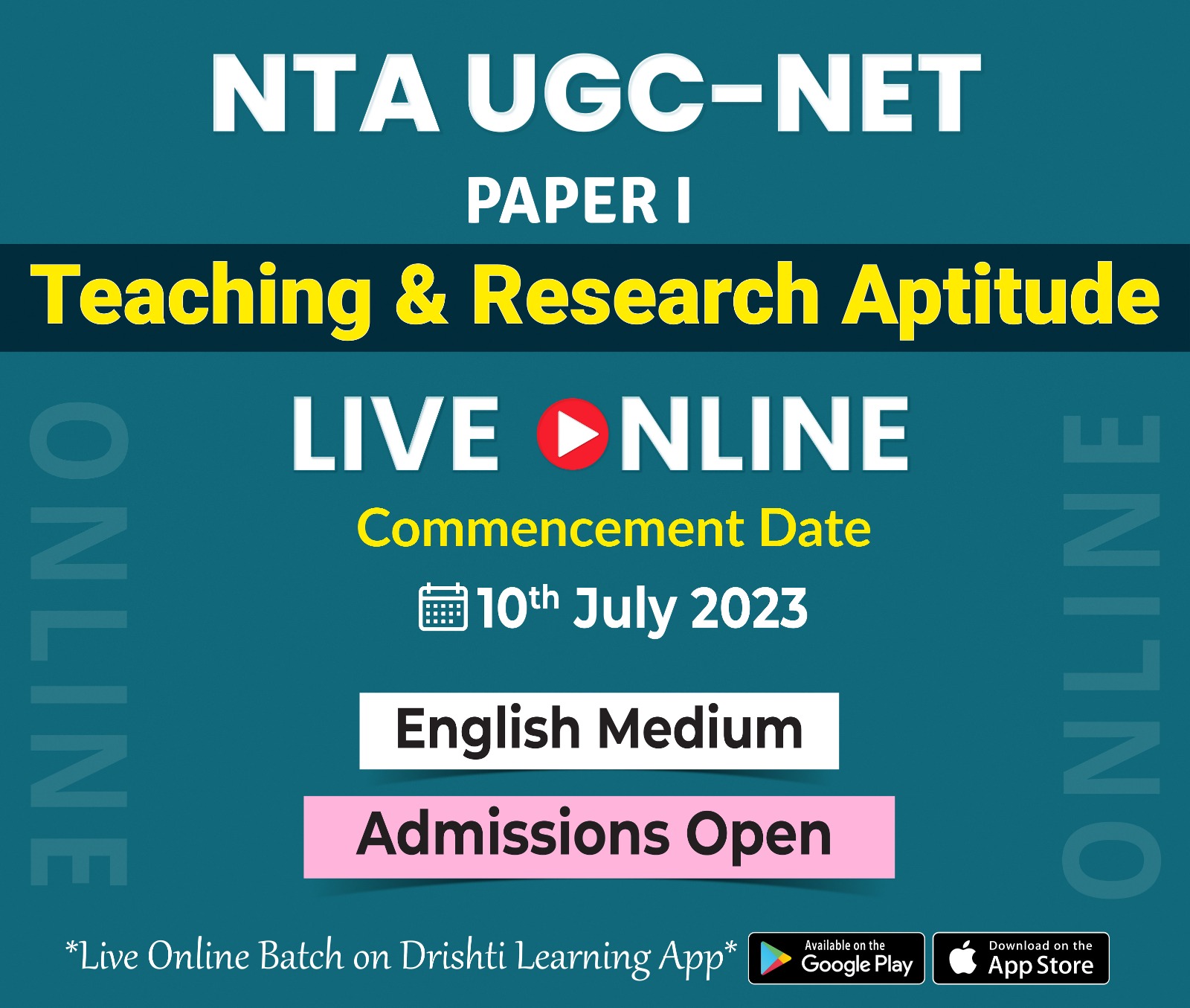
Indian Heritage & Culture
Pilgrim Safety Challenges in Char Dham Yatra
For Prelims: Char Dam Project, Char Dham yatra, Flash floods, Landslides
For Mains: Disaster management challenges
Why in News?
The Char Dham yatra, a pilgrimage to four sacred Hindu shrines in the Himalayas, has witnessed a high number of deaths among the devotees this year.
- According to official data, 149 pilgrims have died since the commencement of the yatra in April 2023, mostly due to cardiac arrest and other health ailments. The yatra, which attracts millions of pilgrims every year, has also been marred by road accidents and landslides.
What is Char Dham Yatra?
- About:
- Char Dham Yatra is a pilgrimage circuit in the Indian state of Uttarakhand.
- It involves visiting four sacred Hindu shrines located in the Himalayas.
- The four shrines included in the yatra are Badrinath, Kedarnath, Gangotri, and Yamunotri.
- It is believed that one should complete the Char Dham Yatra in a clockwise direction: Yamunotri, Gangotri, Kedarnath, and Badrinath.
- Religious Significance:
- Each of these shrines holds significant religious and mythological importance in Hinduism.
- It is believed that undertaking the Char Dham Yatra can cleanse one's sins and lead to spiritual salvation.
- Pilgrimage Season:
- Usually starts in April or May and continues until November, depending on weather conditions.
- The yatra involves trekking through challenging terrains, including high altitudes and mountainous regions.
- Economic Importance:
- The yatra is not only a religious journey but also a significant cultural and tourism event for Uttarakhand, attracting visitors from across India and around the world.
- It holds great economic importance for the local communities, providing employment opportunities and boosting the tourism industry in the region.
- Note:
- Yamunotri Dham:
- Location: Uttarkashi district.
- Dedicated to: Goddess Yamuna.
- River Yamuna is the second-most sacred river in India after River Ganga.
- Gangotri Dham:
- Location: Uttarkashi district.
- Dedicated to: Goddess Ganga.
- Considered the most sacred of all Indian rivers.
- Kedarnath Dham:
- Location: Rudraprayag district.
- Dedicated to: Lord Shiva.
- Situated on the bank of the Mandakini River.
- One of the 12 Jyotirlingas (divine representations of Lord Shiva) in India.
- Badrinath Dham:
- Location: Chamoli district.
- Home to the sacred Badrinarayan Temple.
- Dedicated to: Lord Vishnu.
- One of the holy shrines for Vaishnavites .
- Yamunotri Dham:
What is the Char Dam Project?
- Char Dam Project is a major infrastructure initiative in the Indian state of Uttarakhand.
- It aims to improve connectivity and pilgrimage tourism to the four holy Hindu sites, known as Char Dham.
- Expected to boost tourism, trade, transport, and employment opportunities in Uttarakhand.
- Enhances safety and security for pilgrims and strengthens military operations in border areas.
- Facilitates disaster management and relief operations in emergencies.
What are the Disaster Management Challenges of Char Dham Yatra?
- Disaster Management Challenges:
- Harsh Weather Conditions:
- Extreme Temperatures: Exposure to cold temperatures can lead to hypothermia and other health complications.
- Snowfall: Makes the pilgrimage route slippery and difficult to navigate.
- Vulnerable Terrain:
- Mountainous Region: Steep slopes and rugged terrain pose challenges for infrastructure development and maintenance.
- Remote Locations: Limited access to medical facilities, emergency services, and communication networks.
- Limited Evacuation Routes: In the event of a disaster or medical emergency, evacuating pilgrims from remote areas becomes challenging.
- Health Hazards:
- High Altitudes: Pilgrims experience altitude sickness, which can lead to dizziness, nausea, and shortness of breath.
- Strenuous Treks: Long and arduous walks, especially at higher altitudes, can cause physical exhaustion and injuries.
- Lack of Acclimatization: Insufficient time for pilgrims to adjust to the high altitudes and harsh weather conditions.
- Natural Disasters:
- Landslides: Unstable slopes and heavy rainfall increase the risk of landslides, obstructing the pilgrimage route.
- Flash floods: Sudden and intense rainfall can result in flash floods, posing dangers to pilgrims near rivers and streams.
- In June 2013 flash floods of Kedarnath killed thousands of pilgrims and left many stranded.
- Earthquakes: Uttarakhand falls under a seismic zone, making it susceptible to earthquakes, which can trigger landslides and infrastructure damage.
- Harsh Weather Conditions:
- Precautionary Measures and Mitigation Strategies:
- Weather Monitoring and Early Warning Systems:
- Install weather monitoring stations along the pilgrimage route to track weather changes and implement an early warning system for severe weather events.
- Infrastructure Development and Maintenance:
- Improve road infrastructure, including widening and strengthening roads, constructing protective barriers in landslide-prone areas, and encouraging public-private partnerships for easy and safe travel.
- Preventing Soil Erosion and Landslides:
- Implement slope stabilization techniques and afforestation programs to prevent soil erosion and landslides.
- Emergency Services and Medical Facilities:
- Establish medical facilities and emergency response centers along the route, improve communication networks, and provide training for medical staff and emergency responders.
- Pilgrim Safety and Awareness:
- Conduct pre-yatra orientation programs, provide detailed route information, and encourage medical check-ups for pilgrims.
- Disaster Response and Evacuation Plans:
- Develop comprehensive disaster response plans, designate safe assembly points and temporary shelters, and conduct regular mock drills to ensure preparedness.

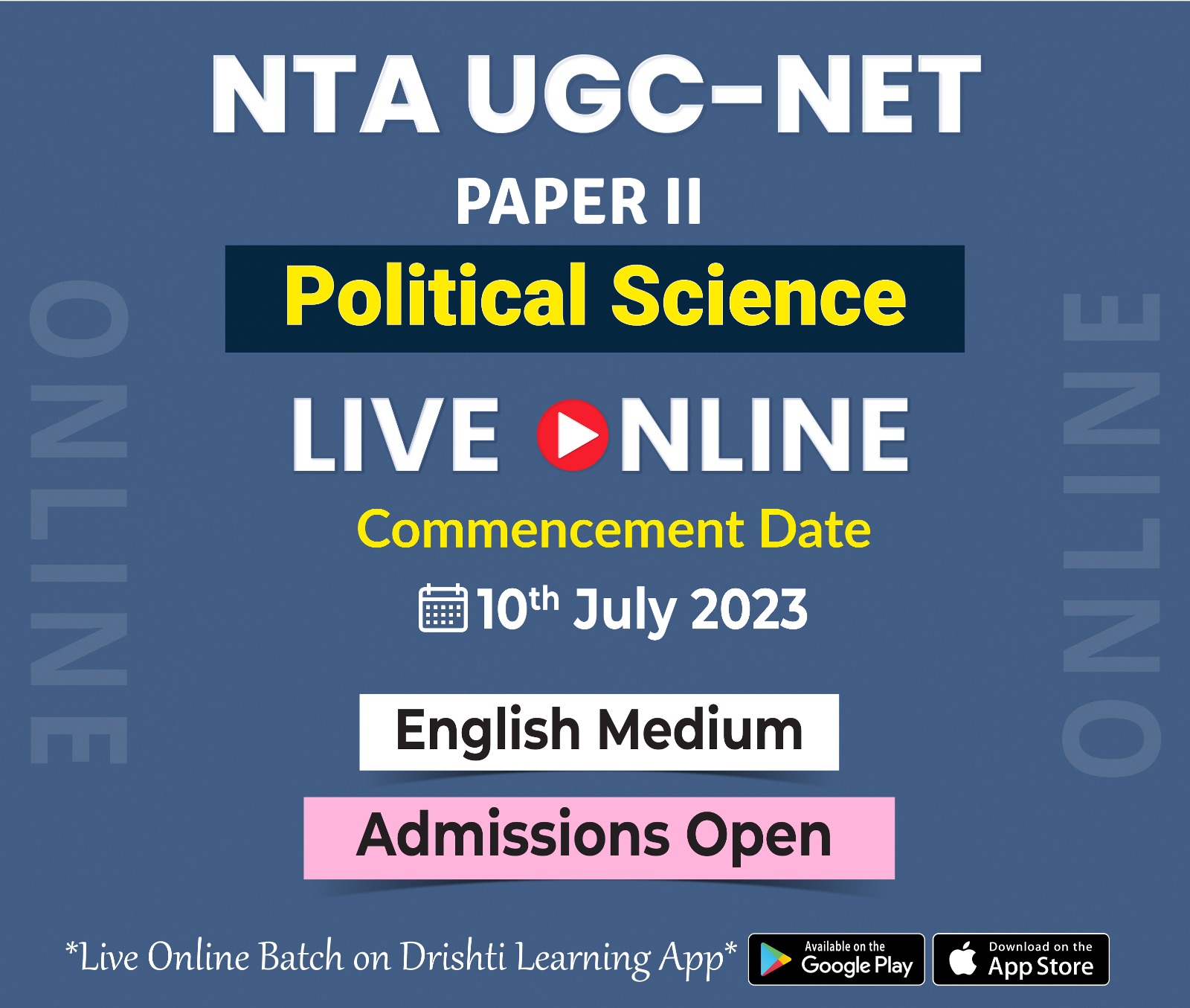
Ethics
Organic Intellectuals and Capitalist Hegemony
For Prelims: Organic Intellectuals, Capitalist Hegemony, Marxist Ideology, Capitalist Hegemony
For Mains: Gramsci’s Philosophy of Praxis
Why in News?
In a recent development that has caught the attention of social and economic observers, a growing wave of organic intellectuals is emerging as a formidable force in challenging capitalist hegemony.
- Italian Marxist Antonio Gramsci introduced the concept of the "organic intellectual" in his Prison Notebooks, highlighting their significance in understanding his philosophy of praxis.
- Gramsci emphasised the complex relationship between class power, ideology, organic intellectuals, hegemony, and the state in capitalist society.
What is Gramsci’s Philosophy of Praxis?
- Gramsci's philosophy of praxis is a way of thinking about Marxism that focuses on the importance of culture, ideas, and people's choices in bringing about historical change.
- Instead of seeing economic factors as the only driving force behind history, Gramsci believed that individuals are active participants in shaping their own destiny, rather than just passive victims of their circumstances.
- According to Gramsci, in modern capitalist societies, there are different social groups with varying interests and levels of awareness.
- The dominant class holds power not only through economic means but also by influencing culture and morals.
- Gramsci's philosophy of praxis seeks to understand how the ruling class maintains its control over the lower classes through cultural and moral leadership.
- It also aims to understand how the dominant class maintains its hegemony, or cultural and moral leadership, over the subordinate classes and how the latter can develop a counter-hegemony that challenges the existing order.
Who are the Organic Intellectuals?
- According to Gramsci, intellectuals are not a separate category of people who possess a special quality of mind or a superior level of education. Rather, intellectuals are defined by their function and role in society.
- Gramsci distinguishes between two types of intellectuals: traditional and organic.
- Traditional intellectuals are those who claim to be independent and autonomous from any class or social group.
- They present themselves as the bearers of universal values and knowledge, such as priests, teachers, artists, scientists, etc.
- However, Gramsci argued that traditional intellectuals are actually aligned with the dominant class and serve its interests by legitimising its worldview and values.
- Organic intellectuals are those who emerge from within a specific class or social group and articulate its interests and aspirations.
- They are organically linked to the masses and mediate between their common sense and the ruling ideology. They also help to organise and mobilise their class or group for political action.
- Gramsci argued that every class or social group produces its own organic intellectuals, but not all of them are equally developed or effective.
- He pays special attention to the role of organic intellectuals in challenging capitalist hegemony and building a counter-hegemonic bloc.
How do Organic Intellectuals Challenge Capitalist Hegemony?
- Capitalist hegemony is not only based on coercion and violence, but also on consent and persuasion.
- However, hegemony is never complete or stable. It is always contested and resisted by alternative forms of consciousness and culture that express the needs and demands of the oppressed classes and groups.
- This is where organic intellectuals play a crucial role. They help to articulate these alternative forms of consciousness and culture into a coherent and comprehensive worldview that challenges the dominant one.
- They also help to connect different classes and groups that share common interests and goals into a historical bloc that can act as a collective agent of historical change.
- Organic intellectuals do not impose their ideas on the masses, but rather engage in a dialogical process with them.
- They respect their common sense, but also critique its limitations and contradictions. They educate them, but also learn from them. They inspire them, but also follow them.

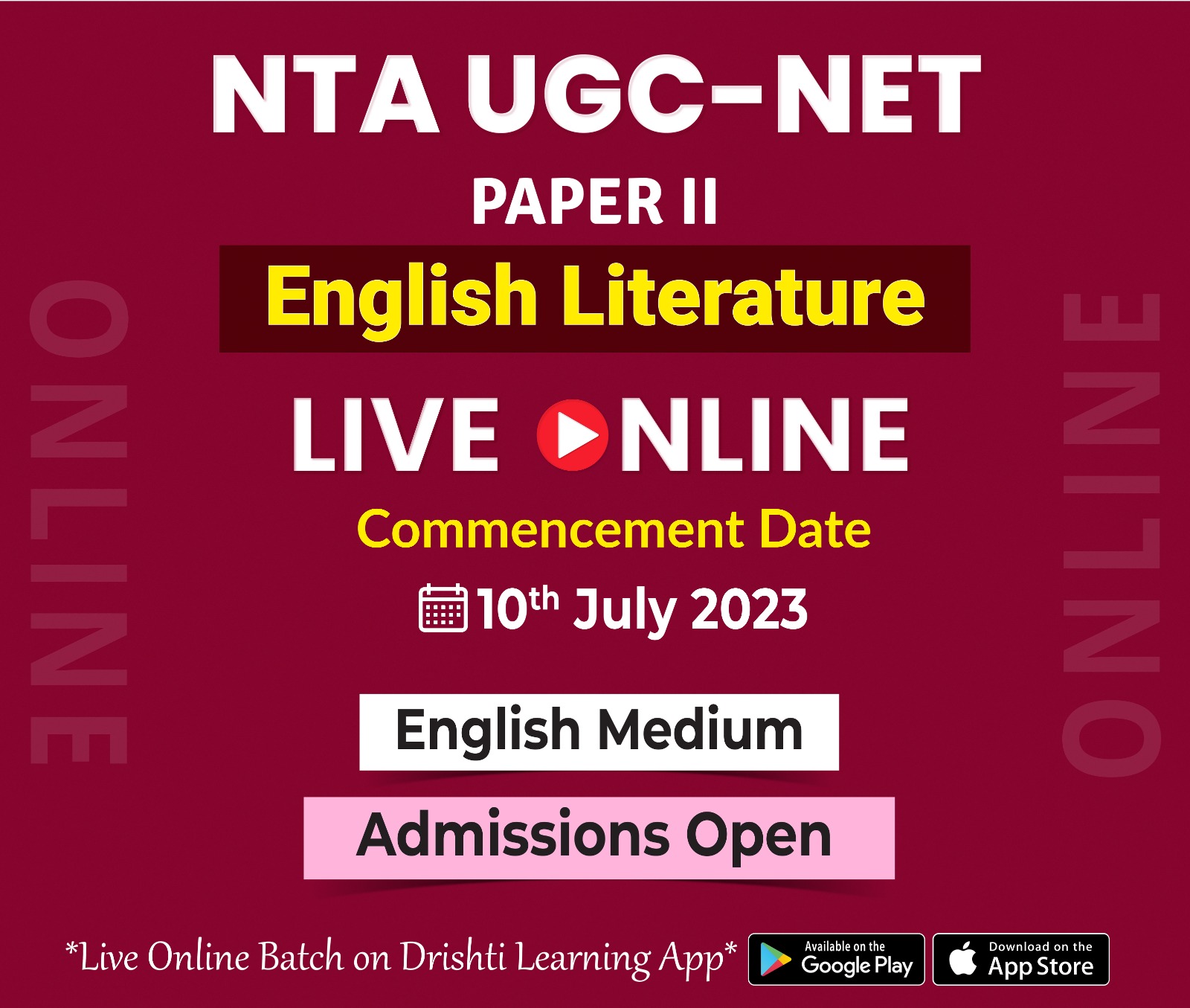
Important Facts For Prelims
Bald Eagle
Why in News?
The American bald eagle (National bird of the US since 1782) was taken off the endangered species list in 2007. Since then, their population has steadily increased, which is considered as one of the biggest success stories in the history of conservation.
- A 2021 report by the US Fish and Wildlife Service revealed that the number of bald eagles in the wild has quadrupled since 2009.
What is there to Know About Bald Eagles?
- About:
- The scientific name of the bald eagle is Haliaeetus leucocephalus.
- Habitat:
- The bald eagle's natural range covers most of North America, including most of Canada, all of the continental US, and northern Mexico.
- It is the only sea eagle endemic to North America.
- Characteristics:
- The average life span of bald eagles is 20 to 30 years.
- Bald eagles build their nests at the very top of tall trees so the eggs will be safe.
- Female bald eagles are a bit bigger than the males.
- Feeding Pattern:
- Besides live fish, bald eagles also prey on other birds, small mammals, snakes, turtles, and crabs, and they readily eat carrion (decaying flesh of dead animals).
- Protection Status:
- IUCN Status: Least Concern
Note: The ban on Dichloro-diphenyl-trichloroethane (DDT) in 1972 by the US was a crucial step towards protecting the bald eagle and other wildlife species from the harmful effects of this pesticide.
- DDT is an insecticide used in agriculture. Some countries outside the US still use DDT to control mosquitoes that spread malaria.


Important Facts For Prelims
Government e-Marketplace
Why in News?
During the 'Kreta-Vikreta Gaurav Samman Samaroh 2023' event held in New Delhi, significant growth in procurement from the Government e-Marketplace (GeM) over the past three years, was highlighted.
What is GeM?
- About:
- GeM facilitates online procurement of common use Goods & Services required by various Government Departments / Organisations / PSUs.
- The initiative was launched in August 2016, by the Ministry of Commerce and Industry, Government of India.
- The current version of GeM, i.e., GeM 3.0 was launched on January 26, 2018.
- It provides the tools of e-bidding, reverse e-auction and demand aggregation to facilitate the government users, achieve the best value for their money and aims to enhance transparency, efficiency and speed in public procurement.
- GeM facilitates online procurement of common use Goods & Services required by various Government Departments / Organisations / PSUs.
Note: Public procurement refers to the process by which governments and state-owned enterprises purchase goods and services from the private sector.
Public procurement amounts to 15-20% of a India’s GDP and therefore an efficiently run public procurement process is critical to our nation’s economy.
- GeM Statistics:
- As of March 31, 2023, GeM recorded a staggering ₹2 lakh crore of Gross Merchandise Value (value of goods sold via customer-to-customer or e-commerce platforms) during FY 2022-23, contributing to a cumulative GMV of over ₹4.29 lakh crore since its inception.
- The total number of transactions on GeM has also crossed 1.54 crore.
- Studies indicate that the platform has generated minimum savings of about 10%, amounting to approximately ₹40,000 crore worth of public money.
- Significance:
- GeM eliminates human interface in vendor registration, order placement and payment processing, thereby reducing delays and corruption.
- It provides complete visibility of all transactions on its platform, ensuring fair and equal opportunity for all sellers.
- It enables price comparison and selection of competitive and quality products.
- It ensures compliance with standards and specifications for all its listed products and services and offers a user-friendly online feedback system.
- It promotes innovation by providing opportunities for startups, MSMEs, women entrepreneurs and artisans to showcase their products and services.
- Major Developments on GeM:
- GeM Outlet Stores: GeM has launched outlet stores for various categories of products such as SARAS, Ajeevika, Tribes India, Startup Runway, Khadi India, India Handloom, India Handicraft, Divyangjan etc.
- GeM-CII MoU: GeM has signed a memorandum of understanding (MoU) with Confederation of Indian Industry (CII) to establish a GeM-CII Centre of Excellence (CoE), which will provide training, research and advocacy support to GeM.
- GeM, CSC and India Post: The integration of India’s postal system India Post and Common Service Center (CSC) with the GeM is operational across the country.
- This allows India Post to provide logistics service into the remotest parts of the country to sellers and buyers transacting via GeM.
- Bamboo Market Window:
- The National Bamboo Mission and GeM have created a dedicated window on the GeM portal for marketing Bamboo Goods.


Rapid Fire
Rapid Fire Current Affairs
RBI Forecasts Further Decline in Gross Non-Performing Assets
In its recent Financial Stability Report (FSR) for June 2023, the Reserve Bank of India (RBI) projected a further decrease in the country's gross non-performing assets (GNPA) for scheduled commercial banks. The GNPA, which reached a 10-year low of 3.9% in March 2023, is expected to decrease to 3.6% by March 2024. The report also highlighted the strengthening of banking and corporate sector balance sheets, with sustained growth in bank credit and low levels of non-performing assets. FSR assesses the overall stability and health of the country's financial sector.
NPAs refer to loans and advances that have stopped generating income for the lender, usually due to default or non-payment by the borrower. GNPAs are the sum of all the loans that have been defaulted by the individuals who have acquired loans from the financial institution.
Read more: Financial Stability Report: RBI
Government Defers TCS on International Credit Card Spends under LRS
In a reversal of its earlier decision, the Indian government has decided to defer the inclusion of international credit card spending outside India under the Liberalised Remittance Scheme (LRS). This means that there will be no levy of Tax Collected at Source (TCS) on such transactions for now. The government has also extended the timeline for implementing the higher proposed TCS rates, pushing it from July 1 to October 1, 2023. The threshold of Rs 7 lakh per financial year per individual for TCS on all LRS payments will still apply, meaning that there will be no TCS on remittances up to Rs 7 lakh. Beyond this threshold, varying rates of TCS will be levied depending on the purpose of remittance.
TCS is the tax payable by a seller, which he collects from the buyer at the time of sale of certain goods or services. TCS is governed by Section 206C of the Income-tax Act, which specifies the goods or services on which TCS is applicable and the rates of TCS.
Read more: International Credit Card Spending Outside India under LRS
Canada’s Open Work Permit Stream for H-1B Visa Holders
Canada plans to create an open work-permit stream, allowing 10,000 American H-1B visa holders to come and work in Canada. The H-1B visa is a non-immigrant visa that enables US companies to hire foreign workers with specialized expertise. Approved applicants under the program will receive open work permits of up to three years, giving them the flexibility to work for any employer across Canada.
This move is expected to benefit a significant number of Indian tech professionals who have been impacted by recent layoffs at major US tech companies.
Read more: H-1B Visa, Recent Wave of Tech Layoffs
India's 5G & Beyond Hackathon 2023
The Department of Telecommunications (DoT), Government of India has announced the '5G & Beyond Hackathon 2023. The primary objective of this hackathon is to identify cutting-edge ideas with an India-focused approach that can be transformed into practical 5G and beyond products and solutions. It is open to individuals, students, start-ups, and academic institutions across India.
5G, short for "fifth generation," refers to the latest generation of wireless communication technology. 5G mainly works in 3 bands, namely low, mid and high frequency spectrum. It is designed to provide faster data speeds, lower latency (delay), increased network capacity, and improved reliability compared to its predecessors, such as 4G (LTE).
Read more: 5G



